German anti-aircraft small-caliber anti-Soviet aircraft (part of 4)
Work on the creation of rapid-fire small-caliber anti-aircraft guns were carried out in Germany long before the Nazis came to power. Back in 1914, the German designer Reinhold Becker presented a prototype 20-mm gun for the 20х70 mm projectile. The principle of operation of automation weapons It was based on the impact of the free gate and the ignition advance of the capsule before complete discharging of the cartridge. This scheme of operation of the automatics made the weapon simple enough, but limited the power of the munition and the initial velocity of the projectile was within 500 m / s. Power was supplied from a detachable magazine on 12 shells. With a length of 1370 mm, the weight of the 20-mm gun was only 30 kg, which allowed it to be mounted on airplanes. In this regard, a small number of "Becker guns" installed on the Gotha G1 bombers. In total, the military department of Kaiser Germany in 1916 ordered 120 20-mm guns. There were plans to start mass production of automatic guns, including in the anti-aircraft version, but the matter did not come to the German capitulation to the German capitulation.
After the defeat of the Germans in the war, all rights to these weapons were transferred to the Swiss company Werkzeugmaschinenfabrik Oerlikon. In 1927, Oerlikon specialists brought the model to mass production, which later became known as 1S. In contrast to the “Becker gun”, the new 20-mm machine gun was created under the more powerful cartridge 20 × 110 mm, with an initial velocity of a projectile with a mass of 117 g - 830 m / s. Tool weight without machine - 68 kg. The rate of fire was 450 rds / min. In the advertising brochures of the company "Oerlikon" it was stated that the height reach is 3 km, in range - 4,4 km. The real possibilities of the antiaircraft "erlikon" were much more modest.
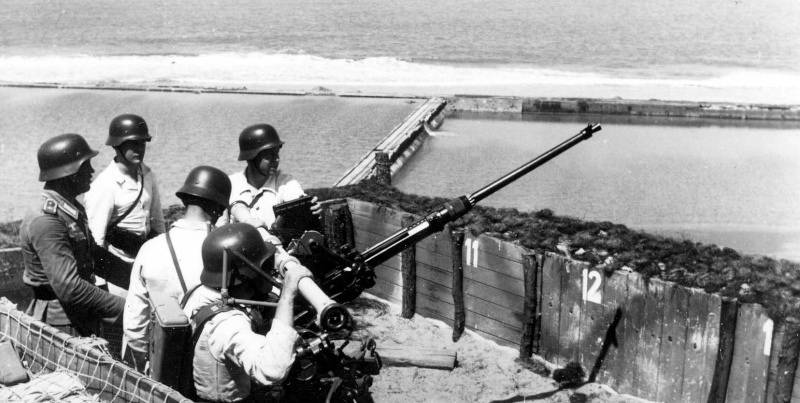
In the Wehrmacht, this anti-aircraft gun received the designation 2,0 cm Flak 28, and in the Luftwaffe it was called 2,0 cm VKPL vz. 36. In total, between 1940 and 1944, Oerlikon delivered 7013 20-mm machines, 14,76 million shells, 12 520 spare barrels and 40 000 cartridge boxes to Germany, Italy and Romania. Several hundred such anti-aircraft guns were captured by German troops in Belgium, Holland and Norway.
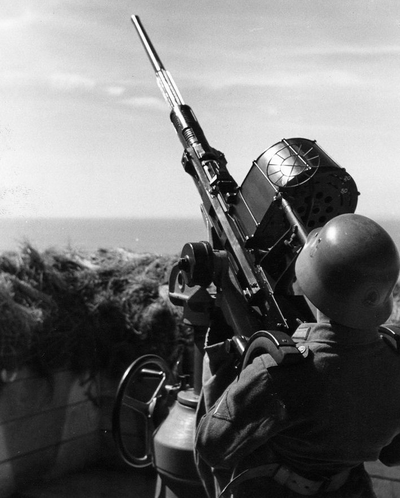
20-mm anti-aircraft "airlikony" delivered to the fleet were mounted on the thumbnail carriages, to ensure the air defense of mobile units, there were options with a tripod machine and a detachable wheel course. However, this rule is not always respected. Tumbam installations were often mounted in stationary positions in fortified areas, and anti-aircraft guns on tripods were placed on various floating craft, or used in the air defense systems of naval bases.
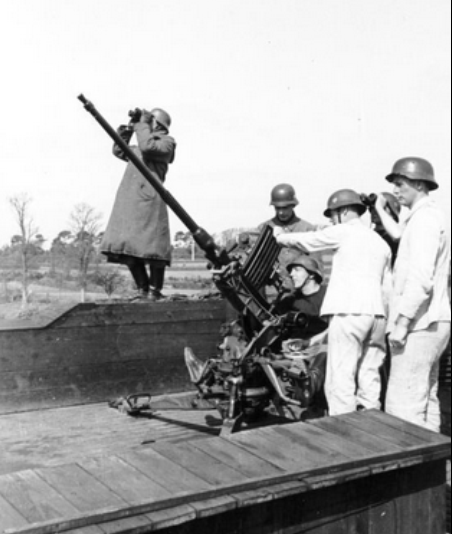
Although the 2,0 cm Flak 28 combat rate of fire due to the low rate of fire and the use of box magazines on 15 and drum shells on 30 was relatively small, in general, due to its simple and reliable design and acceptable weight and size characteristics, it was quite an effective weapon, with effective range of air firing. goals - to 1,5 km. Subsequently, during the war years, all the 20-mm anti-aircraft guns were called “erlikon”, although there were not so many of them against the background of other German anti-aircraft guns of the same caliber. According to German data in the Wehrmacht, Luftwaffe and Kringsmarin, there were only a little more than 3000 installations 2,0 cm Flak 28.
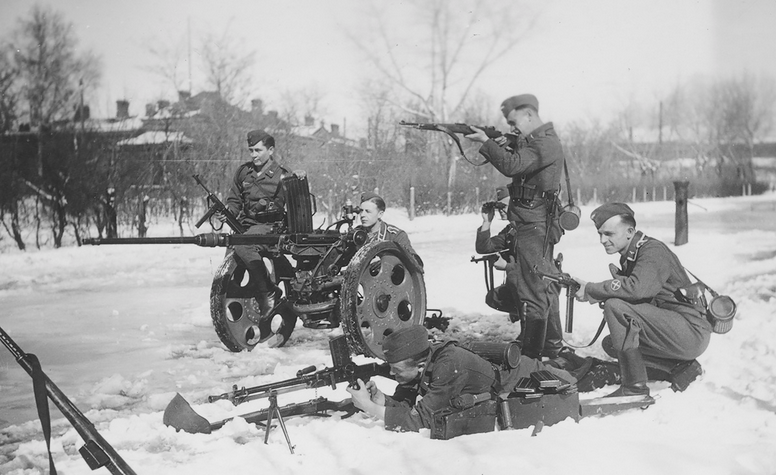
Structurally, a lot in common with the anti-aircraft gun 2,0 cm Flak 28 had a 20 mm aviation MG-FF gun developed in 1936 by the German company Ikaria Werke Berlin based on the Swiss automatic gun Oerlikon FF. The main difference between the aviation MG-FF and the 2,0 cm Flak 28 anti-aircraft gun was the use of a much weaker ammunition of 20x80 mm. Compared to the Swiss Oerlikon FF, the barrel length and reloading system were increased by 60 mm. For feeding the airgun, 15 carob stores or 30, 45 and 100 shell drums were used. A shell weighing 117 g, left the barrel length of 820 mm with an initial speed of 580 m / s. The rate of fire did not exceed 540 rounds / min.
In order to at least somehow compensate for the not high penetrating ability of the armor-piercing projectile and the weak high-explosive effect of the fragmentation projectile at the end of 1940, the experts of the Institute of Ballistics of the Luftwaffe Technical Academy created a thin-walled high-explosive projectile with a high filling ratio of explosive. A thin shell of the projectile was carried out by the method of deep drawing of special alloy steel and hardened hardened. Compared with the former fragmentation projectile equipped with 3 g pentrite, the filling ratio increased from 4 to 20%. The new 20-mm projectile, designated Minengeschoss (German projectile-mine), contained hexogen-based plastic explosives with the addition of aluminum powder. This explosive was superior to TNT by power approximately 2 times, characterized by an increased high-explosive and incendiary effect. The new lightweight time-delay fuses made it possible for the projectile to burst within the aircraft structure, causing serious damage not to the skin, but to the power set of the airframe. So, when a high-explosive projectile hit the base of a fighter wing, in most cases it would tear off. Since the new projectile contained less metal, its mass decreased from 117 to 94, which, in turn, affected the recoil force of the free gun shutter. To keep the automation working, it was necessary to significantly ease the valve and reduce the force of the return spring.
A new modification of the gun assigned the index MG-FF / M. At the same time, ammunition for the old versions of the MG-FF and the new MG-FF / M were not interchangeable. Changes made to the design of the weapon were minimal and a significant number of MG-FF guns released by replacing the bolt and return spring were upgraded in the field workshops to the level of MG-FF / M. Although the introduction of a high-explosive projectile increased the effectiveness of firing at air targets, the range of aimed fire even at very large and low-maneuverable aircraft did not exceed the 500 m.
By the end of 1941, the MG-FF gun had already ceased to meet the requirements of modern warfare. Its low weight and technological simplicity were not compensated by significant drawbacks: low rate of fire, low initial velocity of the projectile and bulky drum magazine. The adoption of the MG.151 / 20 aviation cannon with a tape feed of ammunition, although much more complex and difficult, but also much more rapid-firing and accurate, gradually led to the decommissioning of the aviation “airlicon”.
In the second half of the war, many 20-mm guns available in the warehouses echoed the fate of X.UMM-mm MG.7,92 / 15 and 17-mm MG.13 machine guns taken from aircraft. Several hundred aircraft cannons were installed on pivot mounts, which were used for air defense of airfields and for arming small displacement ships. However, the “landed” MG-FFs in terms of range and accuracy of the fire were much inferior to the specialized 131-mm anti-aircraft guns originally created for much more powerful ammunition. So the maximum effective slant range of the anti-aircraft variant MG-FF was 20 m.
In Germans, the Germans were 20-mm anti-aircraft guns 2,0 cm FlaK 30 and 2,0 cm Flak 38, differing from each other in some details. 2,0 cm FlaK 30 (2,0 cm Flugzeugabwehrkanone 30 - 20-mm anti-aircraft gun model 1930 of the year) was developed by Rheinmetall in 1930 and officially entered service in 1934 year. In addition to Germany, these 20-mm anti-aircraft guns were officially in service in Bulgaria, Holland, Lithuania, China and Finland. The advantages of the Flak 30 anti-aircraft gun were: simplicity of design, possibility of quick disassembly and assembly, and relatively low weight.
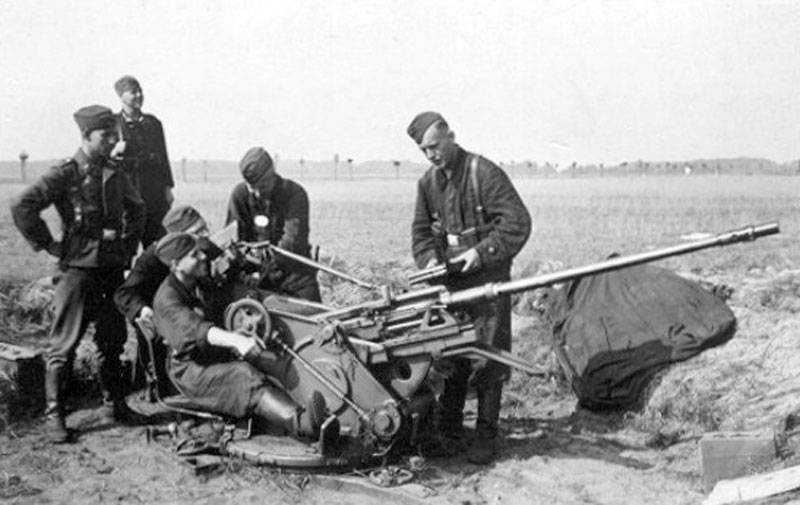
The principle of operation of the automatic 20-mm anti-aircraft installation was based on the use of recoil force in the short course of the barrel. The unit had a recoil device and a feed of ammunition from the carob shop on 20 shells. Rate of fire 240 rds / min.
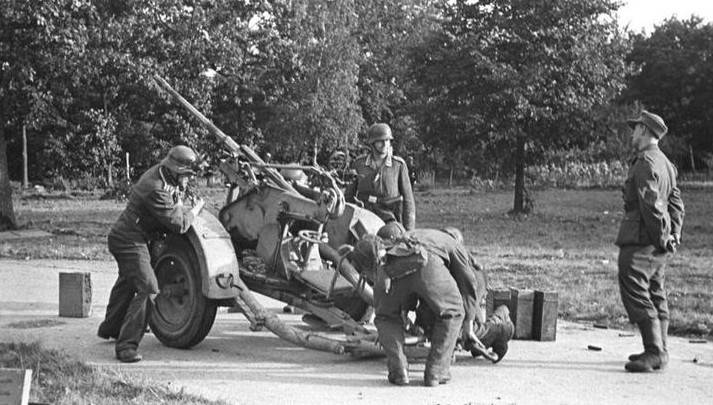
During transportation, the implement was placed on a two-wheeled course and secured with two brackets and a connecting pin. It took only a few seconds to remove the pin, after which the clamps were loosened, and the system along with the gun carriage could be lowered to the ground. The carriage provided the possibility of a circular attack with the highest angle of elevation 90 °.
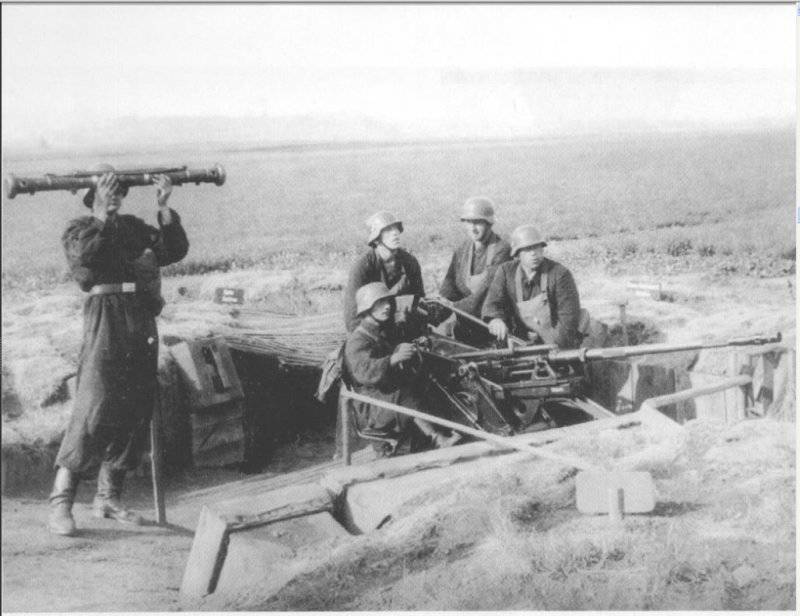
The automatic building sight produced vertical and lateral lead. Data was entered into the scope manually and determined visually, except for the range, which was measured by a stereo range finder.
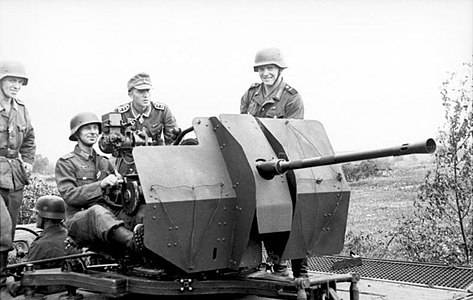
Since 20-mm anti-aircraft guns were often used for fire support of ground units, beginning in 1940, some of them were fired with a splinter shield. The mass of 2,0 cm FlaK 30 with a wheel course without a shield was about 740 kg, in a combat position - 450 kg.
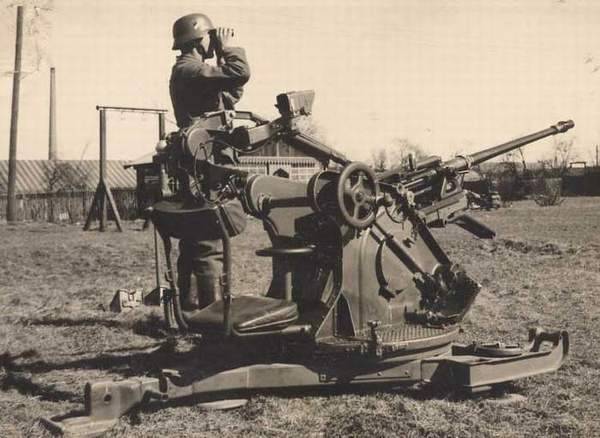
For shooting from 2,0 cm FlaK 30, 20 × 138 mm ammunition was used, with more muzzle energy than 20 × 110 mm ammunition designed for X-NUMX cm Flak 2,0 anti-aircraft guns. The fragmentation-tracer with a mass of 28 g left the Flak 115 barrel at a speed of 30 m / s. Also in the ammunition included armor-piercing, incendiary tracer and armor-piercing tracer shells. The latter weighed 900 g and at the initial speed of 140 m / s at a distance of 830 m punched 300 mm armor. Theoretically, the 20-mm anti-aircraft gun could hit targets at a height of more than 20 m, the maximum firing range - to 3000 m. However, the effective fire zone was about two times smaller.
In addition to the main version, intended for use in the air defense of the ground forces, two more serial modifications were created: 2,0 cm FlaK C / 30 and G-Wagen I (E) leichte FlaK.
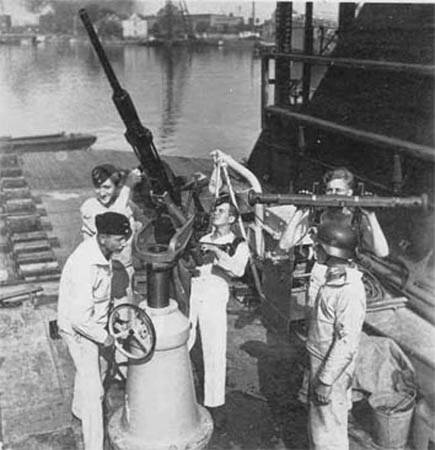
An anti-aircraft gun on a C / 35 carriage with a 20 drum magazine was used to arm warships, but it was often used in permanent, engineering-protected positions. Many such anti-aircraft guns were available in the fortifications of the Atlantic Wall. The G-Wagen I (E) leichte FlaK anti-aircraft gun had railroad specificity, it was equipped with mobile anti-aircraft batteries designed to protect large railway junctions, and this modification was installed on armored trains.
The baptism of fire of German 20-mm anti-aircraft guns took place in Spain. In general, the anti-aircraft gun proved to be positive, it was equally effective against bombers and light tanks available to the Republicans. Based on the results of the combat use of 2,0 cm Flak 30 in Spain, Mauser upgraded the anti-aircraft system. The upgraded sample was called 2,0 cm Flak 38. The new anti-aircraft machine used the same ammunition, the ballistic characteristics also remained the same.
The principle of operation of 2,0 automatics cm Flak 38 compared with 2,0 сm Flak 30 has not changed. But by reducing the mass of the moving parts and increasing their speeds, the rate of fire was increased by almost 2 times - to 420-480 rpm. The introduction of the space acceleration copier made it possible to combine the unlocking of the shutter with the transfer of kinetic energy to it. To compensate for the increased shock loads, special shock absorbers were introduced. The changes made to the design of the carriage turned out to be minimal, in particular, the second speed was introduced in manual guidance drives. Mass deliveries of 2,0 cm Flak 38 to the troops began in the first half of 1941.
Very often, 2,0 cm Flak 38 was installed on various mobile platforms: half-track tractor SdKfz 10 / 4, armored personnel carrier Sd.Kfz. 251, light tanks of Czech production Pz.Kpfw.38 (t), German Pz.Kpfw. I and Opel Blitz trucks. Self-propelled anti-aircraft installations were used to accompany the columns, covered concentration sites, and often operating in some combat formations with other armored vehicles fired at ground targets.
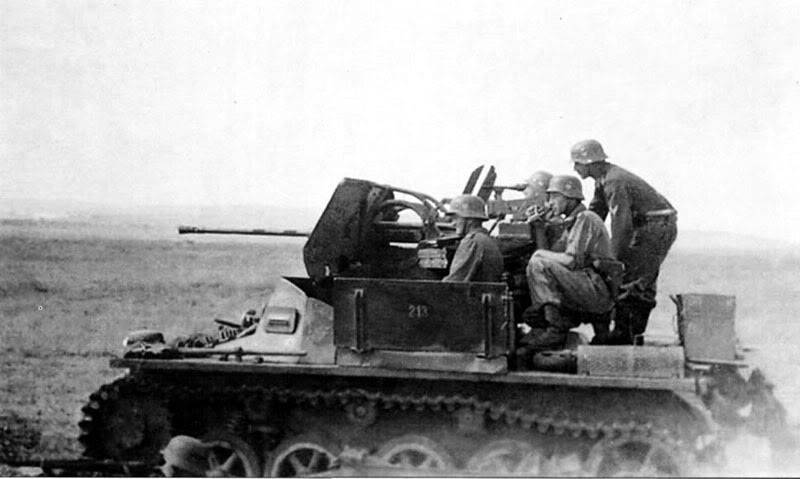
ZSU with 20-mm automatic gun Flak 38 based on light tank Pz.Kpfw. I
Also for the Kingsmarin, the 2,0 cm FlaK C / 38 and 2,0 cm FlaK-Zwilling 38 stand systems were produced. By order of the mountain infantry units, the 1942 anti-aircraft gun Gebirgs-FlaK 2,0 was serially produced from 38, using a lightweight carriage, which transports the gun in a "baggage" manner. His weight when assembled was 360 kg. Weight of individual parts in packs: from 31 to 57 kg. The ballistic characteristics and the rate of fire of a mountain anti-aircraft gun remained at the level of 2,0 cm Flak 38. In the combat position in the case of the installation of an anti-splash shield, the mass of the installation increased to 406 kg, while on a wheeled track - 468 kg.
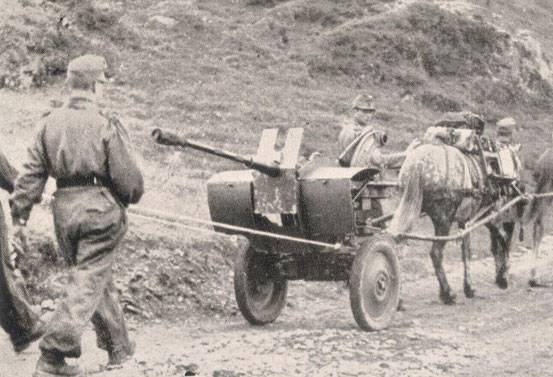
German mountain hunters towing anti-aircraft installation 2,0 cm Gebirgs-FlaK 38
In the first half of the 1939, each Wehrmacht infantry division was supposed to be 12 20-mm anti-aircraft guns. The same number of Flak-30 / 38 was in the anti-aircraft division, attached to the tank and motorized divisions. The scale of the use of 20-mm in the German armed forces can be judged from the statistics collected by the Ministry of Armaments. As of May 1944, the Wehrmacht and the SS troops had 6 355 Flak-30 / 38 anti-aircraft guns, and the Luftwaffe units providing German air defense had more than 20000-mm 20 guns. A few thousand 20-mm anti-aircraft guns were installed on the decks of combat and transport ships, as well as in the vicinity of naval bases.
The German automatic guns 2,0 cm Flak 38 and 2,0 сm Flak 30 at the time of the creation of a complex of service and operational and combat characteristics in their caliber were probably the best anti-aircraft guns in the world. However, the store supply of ammunition severely limited the combat rate of fire. In this regard, the specialists of the Mauser armory company based on the 2,0 cm Flak 38 automatic machine, created the 20-mm quadcopter 2,0 cm Vierlings-Flugabwehrkanone 38 anti-aircraft gun (2-cm quad anti-aircraft gun). In the army, this system was usually called - 2,0 cm Flakvierling 38.
2,0 cm Flakvierling 38 in a museum exposition, next to a twin thumb trimmed ZPU using 7,92-mm machine guns MG.42
The mass of the quad 20-mm anti-aircraft gun in a combat position exceeded 1,5 tons. The carriage allowed firing in any direction with elevation angles from −10 ° to + 100 °. The rate of fire was 1800 rds / min, which significantly increased the probability of hitting the target. At the same time, the number of calculations in comparison with single-barrel 20-mm automata increased 2 times and was 8 people. Flakvierling 38 serial production lasted until March 1945, a total of 3768 installations were transferred to the troops.
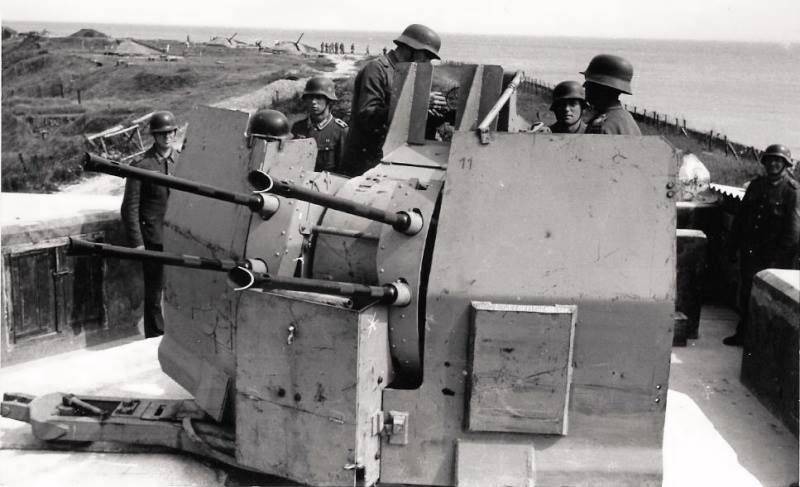
Since the mass and dimensions of the quad unit were very significant, they were often placed on stationary, well-prepared in engineering positions and installed on railway platforms. At the same time, the calculation in front was covered with a splinter shield.
Like the 2,0 cm Flak 38, the 2,0 cm Flakvierling 38 anti-aircraft anti-aircraft gun was used to create self-propelled anti-aircraft guns on the chassis of half-track tractor, armored personnel carriers and tanks.
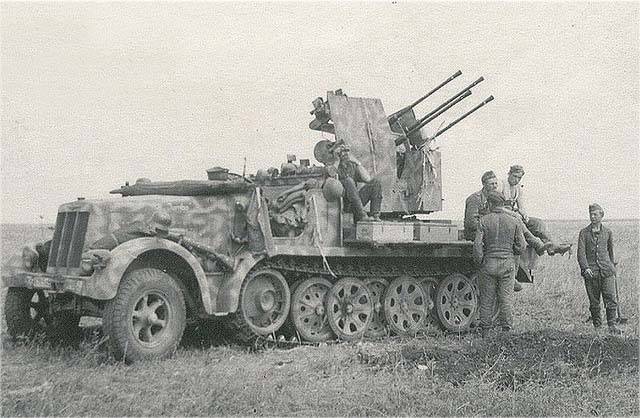
Perhaps, the Flakpanzer IV “Wirbelwind” (it. Anti-tank Tank IV “Smerch”) created on the basis of the medium tank PzKpfw IV was the most well-known and perfect ZSU, in which four-way 20-mm automatic machines were used.
The first ZSU was built in May 1944 at the enterprise of the company Ostbau Werke in Sagan (Silesia, now - the territory of Poland). For this, the chassis of the PzKpfw IV tank damaged in battles and returned for overhaul was used. Instead of a standard turret, a new, nine-sided, open-top one was installed, in which the quad 20-mm anti-aircraft gun was located. The lack of a roof was due to the need to monitor the air situation, and besides, when shooting from four barrels, a large amount of powder gases was ejected, which could cause a deterioration in the state of mind of the calculation in a closed volume. Solid ammunition 3200 20-mm shells placed inside the hull of the tank.
Shipments of the Flakpanzer IV ZSU to the troops began in August 1944. Until February, the 1945 of the whole 122 installation was built, of which 100 was assembled on the chassis of the line tanks for repair. Most of the anti-aircraft "Smerch" was sent to the Eastern Front. The combination of a fairly strong body armor, maneuverability and mobility at the level of the base chassis, as well as the high rate of fire of the quad artillery system made the Flakpanzer IV an effective means of anti-aircraft cover of tank units, and provided the ability to deal not only with air targets, but also with ground targets with light armor and manpower.
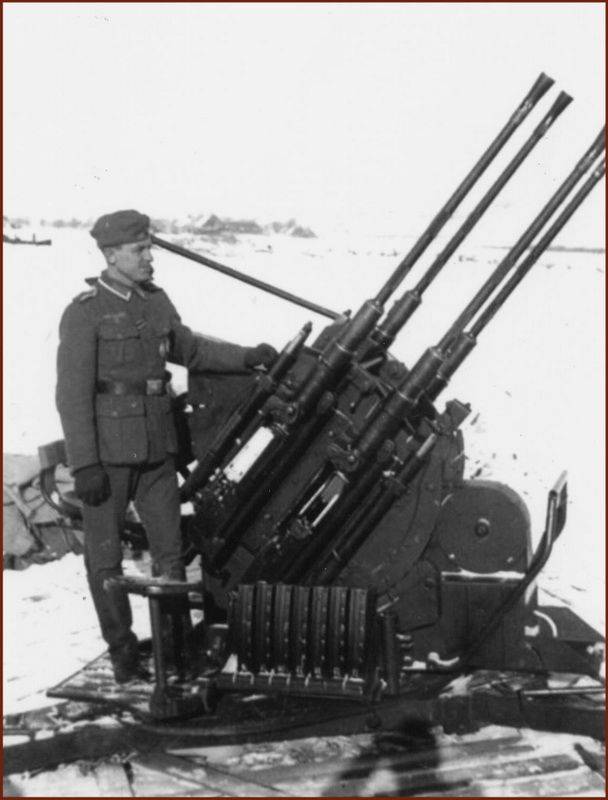
In general, 20-mm assault rifles at the disposal of the German anti-aircraft gunners were a very effective means of defense of the near zone, capable of inflicting heavy losses on attack aircraft and front-line bombers. The weight and dimensions made it possible to place single-barrel and quad-rigs on various, including armored, self-propelled chassis. The inclusion of ZSU with rapid-fire 20-mm anti-aircraft guns in the composition of the transport and military columns, as well as their placement on railway platforms significantly reduced the effectiveness of the Soviet Il-2 attack planes and forced them to select a special group consisting of experienced pilots who suppressed the MZA fire.
In the memoir literature can be found mention of how 20-mm anti-aircraft projectiles ricocheted from the armored corps attack aircraft. Of course, when meeting a small-caliber armor-piercing projectile, even with relatively thin armor at a large angle, rebound is quite possible. But we have to admit that 20-mm armor-piercing incendiary and fragmentation projectiles posed a mortal danger to IL-2.
Our attack aircraft suffered very significant losses from MZA fire. As experience of combat operations and control shooting at the range showed, the IL-2 armored box in most cases did not protect against the destructive action of 20-mm fragmentation and armor-piercing shells. For the loss of efficiency of the propeller group of the attack aircraft, it was often enough to hit the 20-mm fragmentation projectile into any part of the engine. The dimensions of the holes in the armored case in some cases reached 160 mm in diameter. The cockpit armor also did not provide adequate protection from the 20-mm projectiles. When hit in the fuselage for disabling the IL-2, it was necessary to ensure, on average, 6-8 hits of 20-mm fragmentation shells. The dimensions of the holes in the skin of the fuselage ranged from 120-130 mm. At the same time, the likelihood that the rudder control cables of the attack aircraft would be killed by the fragments of the shells was very high. According to static data, the control system (steering wheels, ailerons and control wiring) accounted for 22,6% of all lesions. In 57% of cases, when 20-mm fragmentation shells hit the IL-2 fuselage, the steering rudder control cables were broken and 7% of hits resulted in partial damage to the tubular rudder heights. Hit 2-3-x explosive shells of German guns caliber 20 mm in the keel, stabilizer, steering wheel or height was enough to put the IL-2 out of order.
To be continued ...
Based on:
http://wwii.space/zenitnyie-orudiya-germaniya/
http://www.wk2ammo.com/showthread.php?596-2cm-Flak-28-Oerlikon
https://vk.com/page-50957736_45721716
https://www.pinterest.ru/pin/494199759091515722/
http://www.ww2technik.de/sites/dflak/3%20cm%20flak.htm
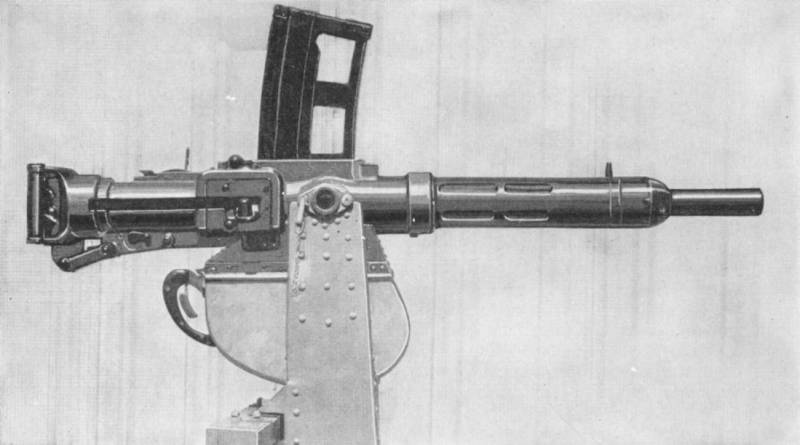
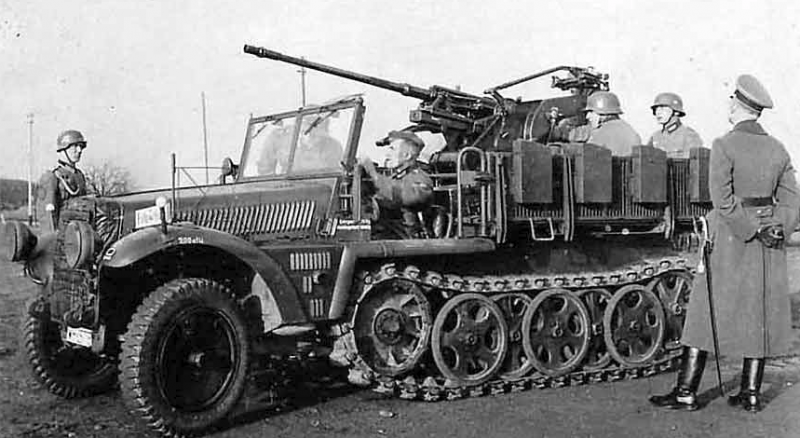
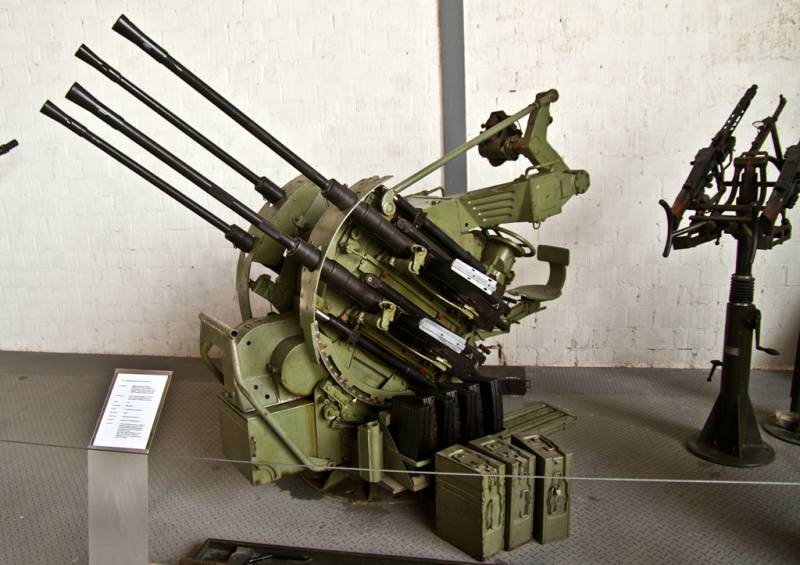
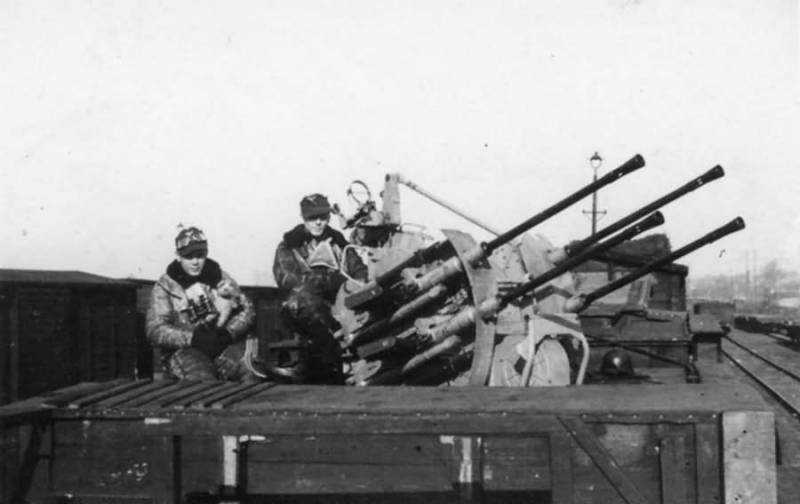
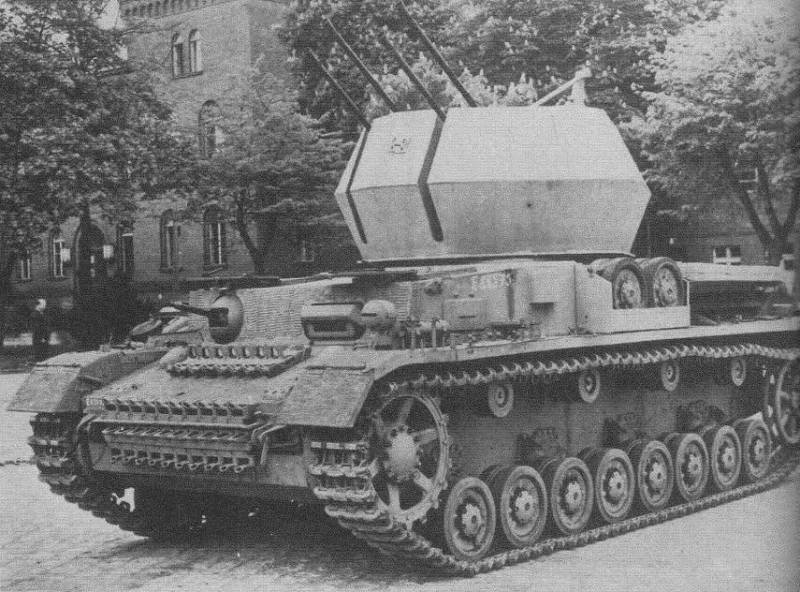
Information